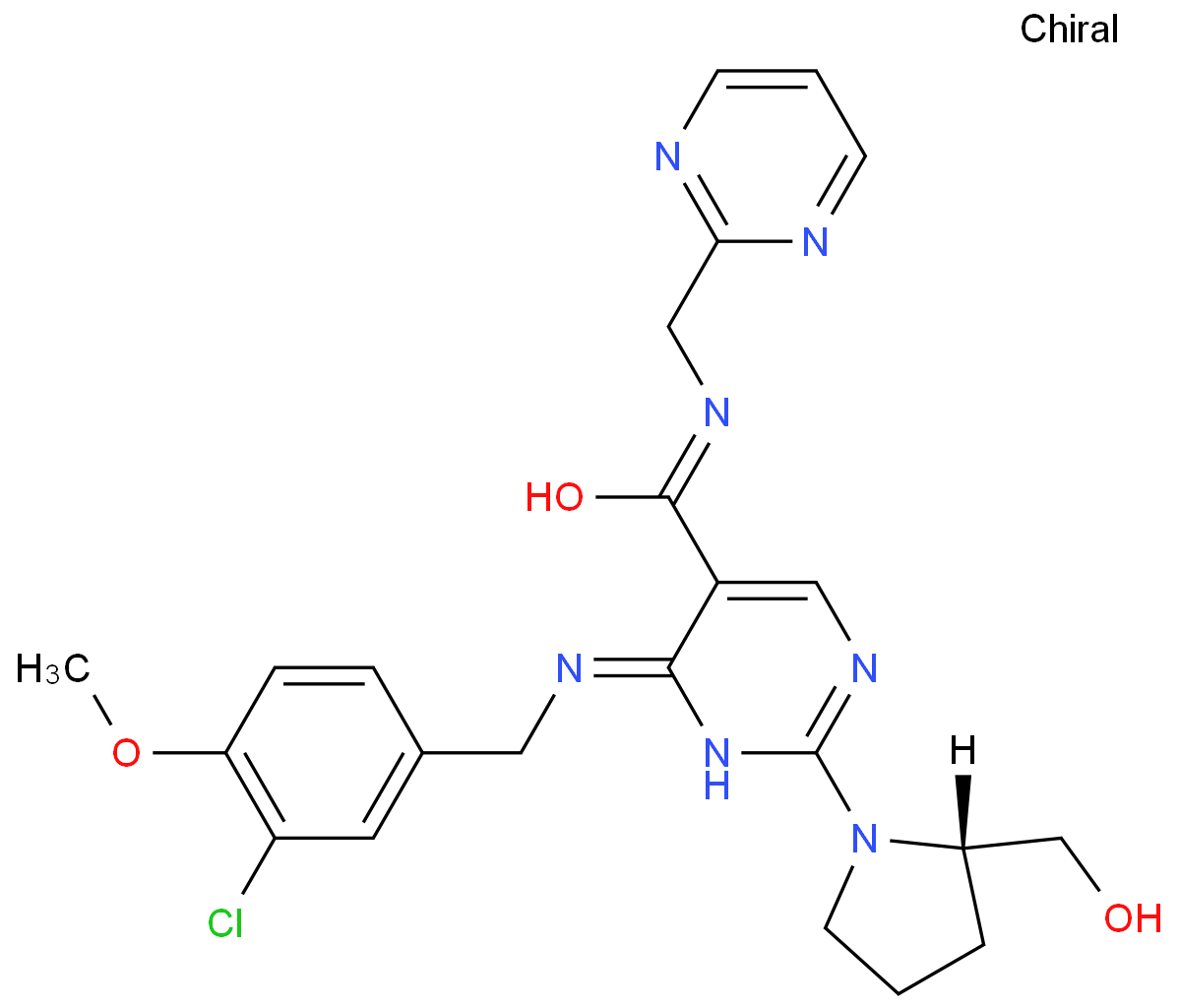 |
Avanafil is a selective phosphodiesterase type 5 inhibitor used to treat erectile dysfunction by enhancing cyclic guanosine monophosphate levels, leading to smooth muscle relaxation and increased blood flow to the penis. It is rapidly absorbed, reaching maximum concentration within 30 to 45 minutes, with a high bioavailability of around 77 percent. Metabolized in the liver, avanafil has a half-life of 3 to 5 hours and is predominantly eliminated through feces. Common adverse effects include headache, flushing, and nasal congestion, while rare but serious effects may include priapism and cardiovascular events. Caution is advised for those with hepatic or renal impairment.

Figure 1. Avanafil
Avanafil is a selective phosphodiesterase type 5 inhibitor used to treat erectile dysfunction. Its mechanism of action centers around the enhancement of cyclic guanosine monophosphate, or cGMP, levels within the penile tissue. When a man experiences sexual stimulation, nitric oxide is released, activating guanylate cyclase, which subsequently increases the production of cGMP. Avanafil plays a crucial role by selectively inhibiting the enzyme phosphodiesterase type 5, or PDE5, which is responsible for breaking down cGMP. 1
By inhibiting PDE5, avanafil prevents the degradation of cGMP, allowing cGMP levels to rise. This increase in cGMP leads to the relaxation of smooth muscles in the penile arteries and corpus cavernosum. As a result, blood flow to the penis is enhanced, facilitating the achievement and maintenance of an erection. One notable aspect of avanafil is its rapid onset of action, with effects potentially noticeable within 15 to 30 minutes after oral intake. However, it is essential to note that avanafil requires sexual stimulation to be effective, as it does not produce an erection independently. Overall, avanafil offers an effective option for managing erectile dysfunction, with a duration of action typically lasting around 4 to 6 hours. 1
Avanafil exhibits rapid absorption when administered orally, with a median time to reach maximum concentration of approximately 30 to 45 minutes. This speed of absorption contributes to its usability and effectiveness in treating erectile dysfunction. Avanafil has a high bioavailability, around 77 percent, allowing it to be effective whether taken with or without food. Once absorbed, avanafil demonstrates significant distribution throughout the body, as indicated by its volume of distribution, which is approximately 105 liters. This extensive distribution is facilitated by its high protein binding capacity, primarily binding to plasma proteins such as albumin. The ability of avanafil to be widely distributed in the body underscores its role in targeting the tissues necessary for achieving an erection. 2
Avanafil undergoes extensive metabolism primarily in the liver, involving the cytochrome P450 enzyme system, particularly CYP3A4 and to a lesser extent, CYP2C9. The metabolites formed from avanafil are mostly inactive, though the main active metabolite, known as M4, is produced through deacetylation. Following metabolism, avanafil and its metabolites are eliminated from the body, with an elimination half-life ranging from approximately 3 to 5 hours. This relatively short half-life indicates that avanafil is a fast-acting option compared to some other phosphodiesterase type 5 inhibitors. The elimination of avanafil is predominantly via feces, accounting for around 63 percent, with a smaller proportion eliminated in urine, approximately 21 percent. It is important to note that avanafil's pharmacokinetics can be altered in special populations, particularly in individuals with hepatic or renal impairment, necessitating cautious use in these groups to avoid adverse effects. 2
Avanafil, a medication used to treat erectile dysfunction, is associated with several adverse effects that users should be aware of. The most frequently reported adverse effects of avanafil include headache, flushing, nasal congestion, and back pain. While these effects are generally mild, other less common adverse effects such as dizziness, dyspepsia, myalgia, and vision changes have also been noted in some individuals. It is important to recognize that, although rare, avanafil can lead to serious cardiovascular events, including myocardial infarction or stroke. Another significant but infrequent adverse effect of avanafil is priapism, which refers to a prolonged and painful erection that necessitates immediate medical attention. Due to the potential for adverse effects, avanafil should always be used under the supervision of a healthcare provider, adhering to the prescribed dosage and instructions to minimize risks and ensure safe usage. 2
1. Goldstein I, Jones LA, Belkoff LH, Karlin GS, Bowden CH, Peterson CA, Trask BA, Day WW. Avanafil for the treatment of erectile dysfunction: a multicenter, randomized, double-blind study in men with diabetes mellitus. Mayo Clin Proc. 2012 Sep;87(9): 843-852.
2. Al-Majed AA, AlKhairallah A, Attwa MW, Alkahtani HM, El-Azab AS, Abdel-Aziz AA, Alkhider A, Hassan SB, Bakheit AH. Avanafil: A comprehensive drug profile. Profiles Drug Subst Excip Relat Methodol. 2024; 49: 115-151.
![5-Pyrimidinecarboxamide, 4-[[(3-chloro-4-hydroxyphenyl)methyl]amino]-2-[(2S)-2-(hydroxymethyl)-1-pyrrolidinyl]-N-(2-pyrimidinylmethyl)-](https://structimg.guidechem.com/7/7/3516006.png) |
 |
 |
 |
![(5-PyriMidinecarboxylicacid, 4-[[(3-chloro-4-Methoxyphenyl)Methyl]aMino]-2-(Methylthio)-,ethyl ester)](https://structimg.guidechem.com/5/5/178564.png) |
 |